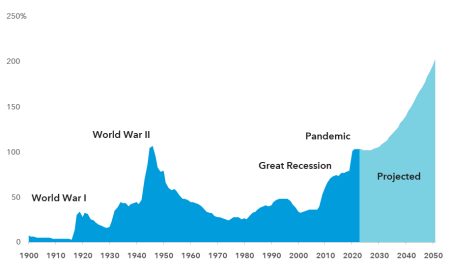Paragraph 1: The Resurgence of the US Economy and Stock Market
Recent media reports highlight the dominant position of the US economy and its stock market on the global stage. This exceptionalism, supported by analyses like those from Bridgewater Associates, stems from several key factors, including superior innovation, efficient management, effective capital deployment, and a shareholder-centric approach among US companies. These factors have propelled the S&P 500 to significantly outperform international counterparts over the long term, demonstrating the enduring strength and attractiveness of the American market. This outperformance is not a recent phenomenon; it represents a continuing trend reflecting the inherent advantages of US businesses.
Paragraph 2: Leveraging US Market Strength with Closed-End Funds (CEFs)
Savvy investors can capitalize on this robust performance through strategic investment vehicles like closed-end funds (CEFs). Many CEFs, focusing primarily on US equities, offer impressive yields exceeding 9%, providing a compelling income stream alongside the potential for capital appreciation. These funds offer a unique opportunity to participate in the growth of the US market while enjoying a significant income component. The historical performance of CEFs like the Adams Diversified Equity Fund (ADX) showcases their potential to deliver substantial returns, often surpassing even the robust performance of the S&P 500.
Paragraph 3: Unpacking the Drivers of Stock Price Growth: Earnings
The impressive returns generated by US stocks and CEFs are underpinned by several fundamental factors. The first key driver is the strong earnings growth demonstrated by US companies. Earnings per share represent the portion of a company’s profit attributable to each outstanding share. A company like Apple, with its robust earnings, offers investors a compelling return on their investment. This earnings power, combined with the potential for future growth, fuels stock price appreciation. The aggregate earnings of the S&P 500 companies, when compared to the total market capitalization, reveal a healthy yield, indicating the potential for continued market growth.
Paragraph 4: The Role of Inflation and Risk Premiums
Inflation, often viewed negatively, can paradoxically contribute to stock price growth. As prices rise, companies typically see their revenues increase proportionally, even if profit margins remain constant. This revenue growth, in turn, can drive up stock prices, creating a natural hedge against inflation. Furthermore, stocks carry an inherent risk premium, reflecting the potential for short-term market fluctuations. This premium, historically around 2%, compensates investors for the volatility associated with stock market investing and contributes to long-term returns. It acknowledges the inherent uncertainties of market participation and rewards investors accordingly.
Paragraph 5: Productivity Growth and the Cumulative Effect on Returns
Another crucial factor driving long-term stock market growth is productivity growth. This encompasses improvements in technology, a more skilled workforce, and other factors that enhance overall economic output. Historically, productivity growth has averaged around 2%, further boosting the potential returns from stock investments. When combined with earnings growth, inflation effects, and the risk premium, these factors create a powerful engine for long-term stock market appreciation. This cumulative effect results in a projected annual return of around 9.8%, closely matching the historical average performance of the S&P 500.
Paragraph 6: The Advantages of CEFs for Income Investors
For income-focused investors, CEFs offer distinct advantages over traditional index funds or ETFs. Their high yields provide a consistent income stream, allowing investors to benefit from the growth of the US market while receiving regular cash distributions. This eliminates the need to sell shares to generate income, a crucial advantage during market downturns. Unlike investors in low-yielding index funds who may be forced to sell at inopportune times, CEF investors can maintain their positions and continue to collect their distributions, preserving their capital and maximizing their long-term returns. This income stability further enhances the appeal of CEFs as a powerful investment tool for generating consistent income.










